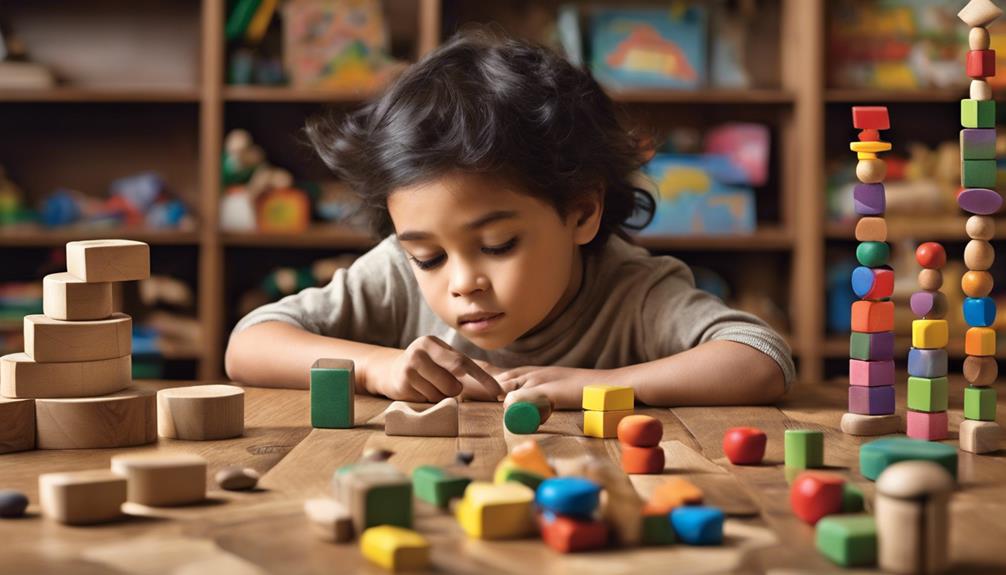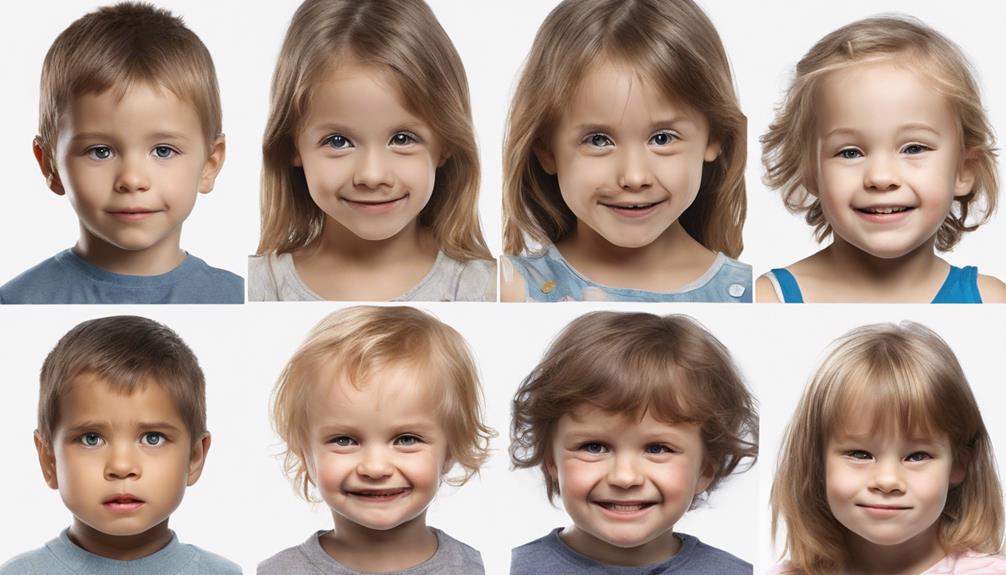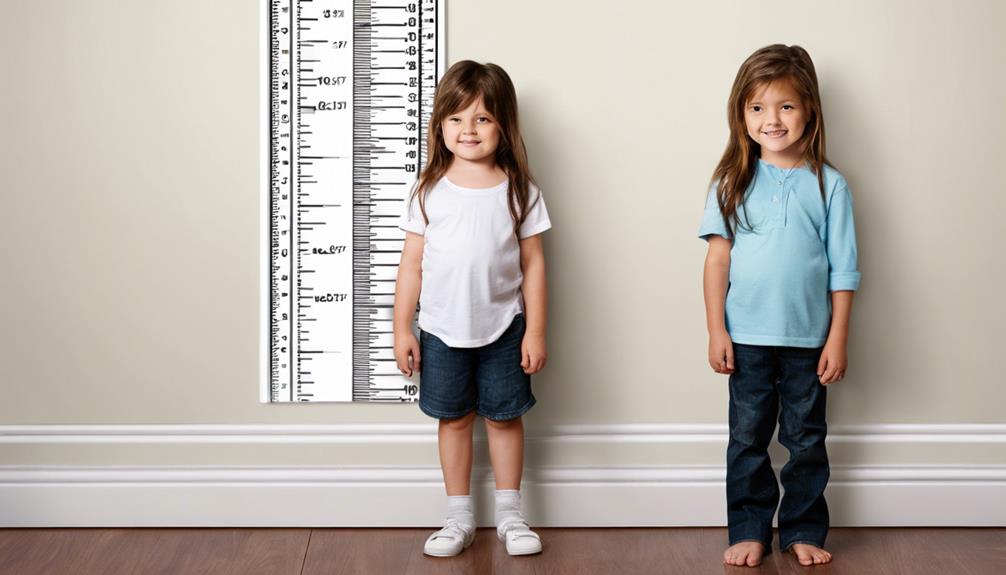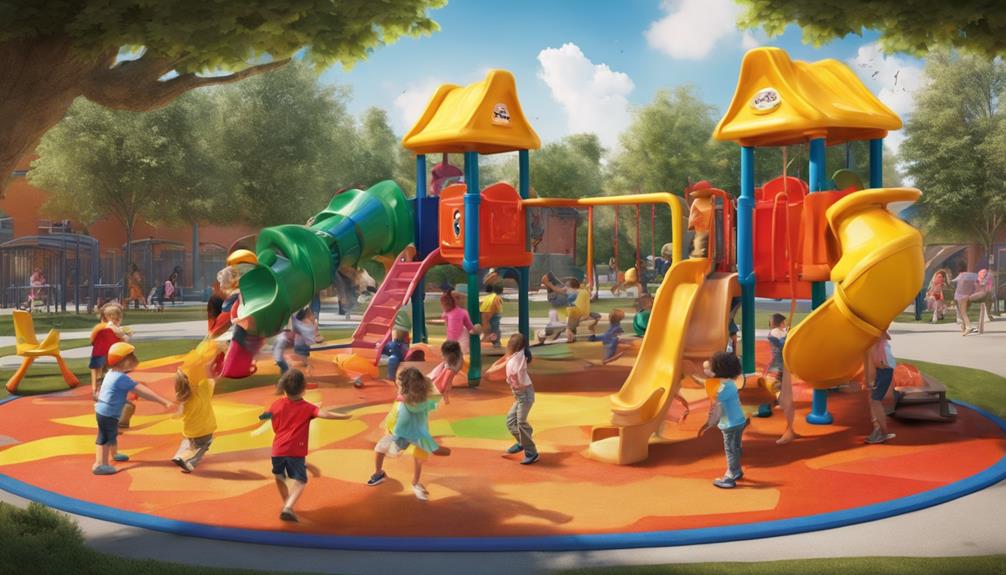In the field of child development, comprehending standard measurements is like unraveling the colors of a vivid painting. Each shade unveils a distinct aspect of a child’s growth journey.
As we navigate through this intricate landscape, we uncover how standard measurements serve as the compass guiding us towards comprehending the multifaceted dimensions of a child's developmental journey.
Let's explore how these measurements not only quantify growth but also illuminate the nuanced intricacies of a child's progress. They shed light on the untold stories hidden within each metric.
Key Takeaways
- Standard measurements in child development provide a universal framework for growth evaluation.
- Assessment tools focus on physical, cognitive, emotional, and social development domains.
- These tools help identify delays, strengths, and areas needing support.
- Standard measurements enable tailored interventions, monitoring progress, and promoting healthy growth.
Importance of Standard Measurements
Standard measurements in child development are indispensable tools that provide a universal framework for evaluating and monitoring children's growth and developmental progress.
In the domain of early childhood development, these measurement tools play an essential role in evaluating the quality of early childhood programs and the learning outcomes of young children. Through systematic evaluation, educators and policymakers can gather valuable information about a child's development, enabling them to tailor interventions and support based on specific needs.
By utilizing standardized measurements, professionals can track children's progress over time, identify areas requiring attention, and make informed decisions to enhance the overall developmental experience for preschool-aged children.
Additionally, these tools facilitate the comparison of data across diverse settings and populations, promoting a more thorough understanding of developmental trends and patterns.
Ultimately, the use of standard measurements not only guarantees consistency and reliability in evaluating child development but also serves as a foundation for evidence-based practices that drive continuous improvement in early childhood programs.
Physical Development Assessment Tools

How do physical development assessment tools contribute to evaluating children's milestones and growth patterns?
Evaluating physical development in child development is important for early childhood education. Tools like the Denver Developmental Screening Test, Ages and Stages Questionnaires, and Peabody Developmental Motor Scales play a significant role in appraising children's motor skills, coordination, and overall growth patterns.
These assessment tools focus on various aspects such as fine and gross motor skills, personal-social skills, language skills, sitting, crawling, walking, and hand-eye coordination. By utilizing these tools, educators and healthcare professionals can track a child's progress and identify any delays or concerns in their physical development.
This proactive approach enables early intervention and support for children who may require additional assistance in reaching their developmental milestones. Understanding a child's physical abilities through these assessment tools is fundamental in promoting healthy growth and development during their formative years.
Cognitive Development Evaluation Methods

Evaluating cognitive development in children involves gauging their thinking, reasoning, problem-solving, and memory skills through a range of structured methods. These methods include standardized tests, observations, and interviews with caregivers and educators. Assessments during the preschool years are vital as they help identify strengths and areas needing support for tailored interventions. Cognitive development evaluations often focus on language development, memory retention, attention span, and logical reasoning abilities.
Results from these assessments provide valuable insights to educators and caregivers, guiding them in implementing appropriate strategies to promote best cognitive growth in children. By utilizing a combination of assessment tools, such as standardized tests, observations, and interviews, professionals can gain a thorough understanding of a child's cognitive abilities, enabling them to create targeted interventions that support the child's early development effectively.
Emotional Development Measurement Techniques

To gain a thorough understanding of children's emotional development, professionals utilize observation, self-report measures, and behavioral assessments as key techniques. Observational methods involve keenly watching and recording a child's emotional responses in diverse situations.
Self-report measures rely on children's self-assessment of their emotions through age-appropriate tools, offering valuable insights into their emotional landscape.
Behavioral assessments explore evaluating emotional expressions, coping mechanisms, and social interactions, providing a holistic view of a child's emotional regulation, empathy, social skills, and resilience in their developmental journey.
These techniques play a pivotal role in thoroughly evaluating and nurturing children's emotional well-being, fostering healthy emotional growth and robust psychological foundations. By employing these assessment tools thoughtfully and systematically, professionals can better support children in managing their emotions, building essential social skills, and cultivating resilience for a brighter future.
Social Development Metrics

Social development metrics in child development play an important role in evaluating children's abilities to interact with others, form relationships, and regulate emotions. Metrics used to evaluate social development include observing social interactions, evaluating emotional intelligence, and analyzing communication skills. These metrics help pinpoint both strengths and areas needing support in a child's social-emotional growth.
Evaluations of social development can involve qualitative observations, standardized tools, and insights from caregivers and educators. By tracking social development metrics over time, progress can be monitored, interventions can be tailored, and healthy social-emotional growth in children can be promoted. It's essential to utilize a combination of methods to gain a thorough understanding of a child's social development, ensuring that interventions and support are appropriately targeted to enhance their interactions and emotional well-being.
Frequently Asked Questions
What Are Standard Measures in Child Development?
We use standard measures in child development to evaluate growth, learning, and behavior. These tools track progress in cognitive, social-emotional, language, and physical domains. They help identify delays, guide interventions, and assess program effectiveness.
Why Is Measurement Important for Child Development?
Measurement in child development is important; it provides valuable insights into growth and helps pinpoint areas needing support. Comparing against norms guarantees appropriate progress. Educators, parents, and policymakers rely on data to make informed decisions for best learning environments.
Why Is It Important to Learn About Measurements?
Understanding measurements is crucial for accurate assessments and tailored support in child development. It enables evidence-based decision-making, tracks milestones, and identifies areas needing attention. It fosters effective communication among stakeholders to promote prime growth and learning experiences.
How Do You Measure Childhood Development?
We assess childhood development through standardized tools like ASQ and ECERS, examining physical, social-emotional, cognitive, and language skills. Observations, checklists, and direct assessments guide our understanding, helping track progress, identify concerns, and tailor interventions effectively.
How Do Standard Measurements in Child Development Relate to the 4 Developmental Domains?
When assessing child development, standard measurements are used to evaluate progress in the 4 developmental domains in child: physical, cognitive, social, and emotional. These measurements help professionals understand how a child is progressing in areas such as language skills, motor development, and social interaction, allowing for targeted intervention if necessary.
Conclusion
Therefore, understanding standard measurements in child development is essential for evaluating physical, cognitive, emotional, and social growth.
Research shows that children who engage in hands-on measurement activities show a 25% increase in problem-solving skills compared to those who do not.
By incorporating measurement concepts into everyday learning experiences, educators can support children's overall development and foster a deeper understanding of the world around them.







